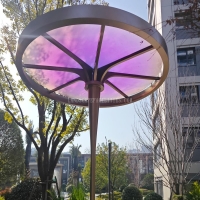Welcome to the website for landscape facilities products and knowledge.
What are the key factors influencing the table’s resistance to scratches from utensils or decor?
The durability of your table against scratches from daily use involves several critical factors that determine its long-term appearance and resilience. Material hardness stands as the primary defense mechanism, with harder surfaces like quartz, granite, and high-quality hardwoods naturally resisting utensil marks better than softer materials such as pine or laminate. The Mohs hardness scale provides a scientific measurement for this property, where materials rating above 5 generally demonstrate superior scratch resistance.
Surface finishes and protective coatings significantly enhance a table's ability to withstand abrasion. Polyurethane, epoxy resin, and ceramic coatings create formidable barriers between the table surface and potential scratchers. The thickness and application quality of these coatings matter tremendously—professional applications typically provide more uniform protection than DIY solutions. Modern nanotechnology coatings have revolutionized this field, creating microscopic protective layers that repel scratches while maintaining surface aesthetics.
Material composition and construction techniques equally influence scratch resistance. Solid wood tables with tight grain patterns generally outperform engineered wood products, while tables with composite materials containing mineral aggregates or reinforced fibers show remarkable durability. The manufacturing process itself—whether heat treatment, compression molding, or chemical hardening—contributes to the final product's defensive capabilities.
Environmental factors and maintenance practices play crucial roles in preserving scratch resistance. Consistent cleaning with appropriate products maintains protective coatings, while exposure to direct sunlight or extreme humidity can degrade surfaces over time. Using placemats, coasters, and tablecloths during activities involving sharp utensils provides additional protection, significantly extending your table's pristine condition.
Understanding these interconnected factors enables informed decisions when selecting tables and implementing protective strategies. Whether considering new furniture purchases or maintaining existing pieces, recognizing the synergy between material science, protective technologies, and usage habits ensures your table remains beautiful despite daily challenges from cutlery, decorative items, and accidental impacts.
Related search:

Recommendation
Metal frame with gradient color acrylic combined with high-end shading landscape facilities